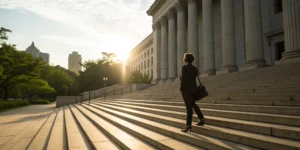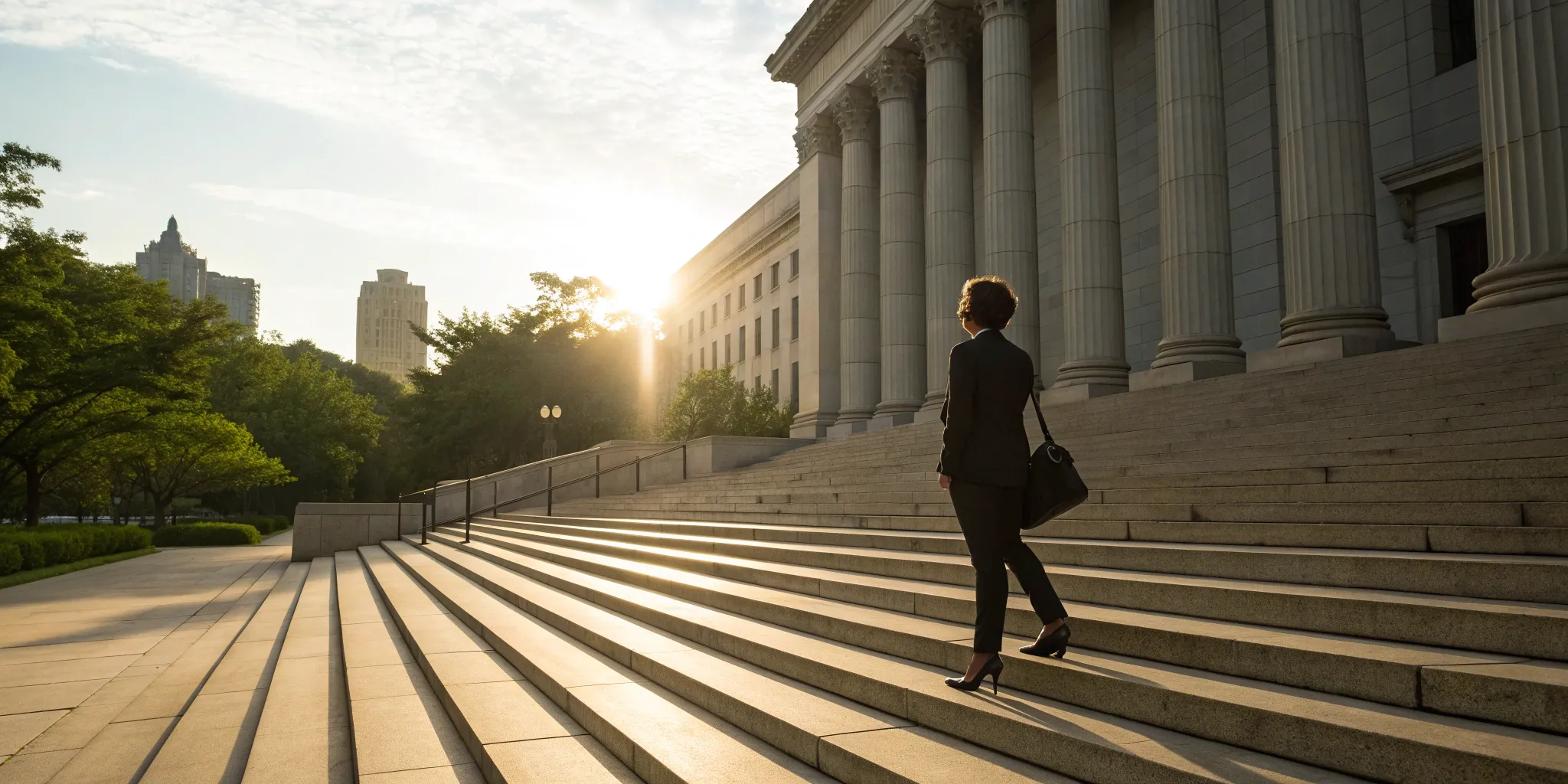The numbers are staggering: a $2.46 billion settlement fund created to compensate over 82,000 survivors. While these figures highlight the immense scale of the Boy Scouts abuse lawsuit, they don’t capture the individual courage it takes for each person to come forward. For many, the legal process itself can feel just as intimidating as the institution they are facing. This guide is here to demystify the process. We will explain exactly how the settlement is structured, what factors influence compensation, and what you need to know to build a strong claim and secure the justice you are rightfully owed.
Key Takeaways
- A Historic Settlement Exists for Survivors: The Boy Scouts of America established a $2.46 billion fund to compensate the thousands of individuals who were abused in its programs. This settlement is a formal acknowledgment of the organization’s failure to protect children and provides a structured path to financial justice.
- Compensation is Based on Your Specific Case: The settlement uses a tiered system to determine payment amounts based on the severity of the abuse. Strong documentation of your experience is crucial for building your claim, and while the main deadline has passed, some state laws may still provide an opportunity to file.
- You Don’t Have to Go Through This Alone: The settlement process has complexities, including ongoing insurance disputes and legal protections for local councils. An experienced attorney handles the paperwork and advocates for you, ensuring your story is heard, and most work on a “no fees until we win” basis so you can seek justice without upfront costs.
The Boy Scouts Abuse Lawsuit: What Happened?
Understanding the Boy Scouts of America (BSA) lawsuit can feel overwhelming, but it boils down to a few key events. For decades, thousands of individuals experienced abuse within the organization, and the legal consequences have been massive. The BSA ultimately filed for bankruptcy to manage the sheer volume of claims, leading to a historic settlement designed to compensate survivors. This situation is a powerful reminder of why holding institutions accountable is so important for protecting vulnerable people and providing a path to justice for those who were harmed. If you’ve been affected, knowing the history of this case is the first step toward understanding your own rights and options. The legal system can be complex, and facing it alone can add another layer of stress to an already difficult experience. You deserve support and clear guidance. An experienced abuse litigation attorney can help you understand your path forward, ensuring your voice is heard and your rights are protected throughout the process. They can handle the legal complexities so you can focus on healing. This case has set important precedents and shows that even large, established organizations can be held responsible for their failures.
A Timeline of the Bankruptcy Case
The Boy Scouts of America filed for Chapter 11 bankruptcy in February 2020. This wasn’t a move to avoid responsibility, but a legal strategy to handle the overwhelming financial pressure from the thousands of sexual abuse claims filed against it. The bankruptcy process created a single venue to resolve all these claims at once. After years of negotiations, a Delaware bankruptcy judge first approved the BSA’s reorganization plan in 2022. This decision was later upheld by a federal court in 2023, officially confirming the path forward for distributing settlement funds to survivors. This timeline marks a critical chapter in the pursuit of justice for those harmed.
The Scope of the Abuse Claims
The scale of the abuse is staggering. More than 82,000 individuals came forward to file claims against the Boy Scouts of America, making it one of the largest cases of its kind in U.S. history. For years, the BSA was aware of the abuse happening within its ranks. Evidence revealed that the organization kept internal records, sometimes called “Perversion Files,” that documented abuse allegations against scout leaders for decades. Unfortunately, this information was often not shared with law enforcement, allowing the cycle of abuse to continue. These revelations were crucial in the legal proceedings and highlighted a systemic failure to protect children.
Important Legal Developments
A major turning point in the case came on September 8, 2022, when a judge approved a $2.46 billion settlement plan. This plan was created to compensate the tens of thousands of survivors who filed claims. The settlement received significant support from the survivors themselves, with over 86% of those who voted choosing to approve the deal. However, the legal journey wasn’t without its complexities. Even as the court confirmed the plan, it acknowledged that if a similar settlement were proposed under current legal standards, it might not be approved. This highlights the unique and challenging nature of this historic case and the ongoing fight for fair personal injury compensation.
Breaking Down the $2.46 Billion Settlement
The Boy Scouts of America (BSA) settlement is one of the largest sexual abuse settlements in U.S. history, totaling $2.46 billion. This fund was created to compensate the thousands of people who were abused as children in BSA programs. Understanding how this massive settlement works is the first step toward getting the justice you deserve. The process involves a complex structure for determining payments, multiple funding sources, and a specific timeline for distribution. Knowing these details can help you prepare for what’s ahead.
How the Settlement is Structured
The settlement fund uses a detailed system, often called a “claims matrix,” to determine how much compensation each survivor receives. This isn’t a one-size-fits-all payment. Instead, the matrix categorizes the abuse into six different levels, ranging from non-contact abuse to the most severe forms of penetration. Each level has a corresponding base payment amount and a maximum potential payout. This tiered approach is designed to evaluate each claim’s specifics, ensuring the compensation reflects the severity of the harm done. The goal is to create a fair and consistent process for every survivor who comes forward.
The Role of Insurance Companies
You might assume the settlement money comes directly from the Boy Scouts of America, but that’s only a small part of the story. In fact, less than 10% of the funds came from the national BSA organization. The bulk of the money was contributed by other entities. Local Boy Scout councils provided $515 million in cash and property. The largest contributions, however, came from insurance companies. The Hartford and Century Indemnity contributed a combined total of over $1.5 billion. This is common in complex abuse litigation, where holding all responsible parties accountable is key to securing justice for survivors.
How and When Funds Are Distributed
The process of paying survivors from the settlement trust began in April 2023. Distributing billions of dollars to tens of thousands of individuals is a massive undertaking, and it’s happening in phases. As of early 2025, the trust had processed more than a quarter of the claims, paying out approximately $70 million to over 12,300 survivors. This shows that while progress is being made, the distribution is an ongoing effort that will take time to complete. Survivors should understand that payments are rolling out gradually as claims are reviewed and approved, not all at once.
How Legal Fees Affect Your Payout
It’s important to have a clear picture of how legal representation affects your final compensation. Most survivors who hired attorneys agreed to a contingency fee, which is a percentage of the settlement money. These fees typically range from 33% to 40%. For example, if a survivor was awarded a $3,500 “quick pay” settlement, their take-home amount after legal fees would be between $2,100 and $2,450. At Counsel Hound, we believe in full transparency. We operate on a “no fees until we win” basis, and we encourage you to contact us for a free, confidential consultation to discuss your case and our fee structure.
Know Your Rights as a Survivor
Taking the step to explore your legal options is a courageous act of reclaiming your power. Understanding your rights is the foundation of that process, and it’s the first step toward justice. The legal system can feel overwhelming, but you don’t have to figure it out alone. The Boy Scouts of America (BSA) bankruptcy case established a specific path for thousands of survivors to seek accountability, but knowing how it applies to your unique situation is key. It’s about more than just a settlement; it’s about acknowledgment and holding a powerful organization responsible for its failure to protect children.
This section will walk you through the essential information you need. We’ll cover who was eligible to file a claim, how state laws and deadlines can still offer avenues for justice, what kind of information helps build a strong case, and how getting the right legal support can make all the difference. Our goal is to give you clear, straightforward answers so you can make informed decisions about what comes next. You’ve been through enough; getting clarity on your rights shouldn’t be another battle.
Who is Eligible to File a Claim?
To file a claim in the BSA bankruptcy case, the abuse must have occurred in connection with a Boy Scouts program or activity. This is a broad definition. It means survivors can pursue claims for abuse committed by individuals affiliated with the BSA, even if the person wasn’t a direct employee. This includes scoutmasters, troop volunteers, and other adults involved in scouting events. The core of the eligibility is the link between the abuse and the Boy Scouts organization. If you were harmed while participating in any capacity, you may have a path to justice. An experienced attorney can help you understand if your experience qualifies under the established criteria for abuse litigation.
Understanding State Laws and Deadlines
While the deadline to file a claim in the main BSA bankruptcy trust has passed, it’s not always the end of the road. State laws, known as statutes of limitations, set time limits for filing lawsuits. However, many states have created “lookback windows” that temporarily lift these deadlines specifically for survivors of childhood sexual abuse, giving them a new opportunity to file a civil claim. These laws can be complex and vary significantly from one state to another. They might allow you to pursue a case against a local BSA council or related entities not fully shielded by the national bankruptcy. Understanding these nuances is critical, which is why discussing your case with a personal injury lawyer is a crucial first step.
What Documents Do You Need?
When you file a claim, you’ll need to provide a detailed account of your experience. The goal is to create a clear picture of what happened. Any information you can recall is valuable, but don’t worry if you don’t have everything perfectly organized. Helpful details include the approximate dates and locations of the abuse, the name of your abuser, and your troop number. Documents like old photographs from your time in scouts, journal entries, or medical records can also support your claim. Remember, the process is not about re-traumatizing you. A good legal team will guide you through this step with compassion, helping you gather what’s needed. If you have questions about what to prepare, you can always contact us for a confidential discussion.
How Legal Representation Works
You do not have to go through this process alone. Having a compassionate and skilled attorney by your side can make a significant difference. Your legal representative handles the complex paperwork, communicates with the settlement trust and insurance companies, and advocates for you at every turn. At Counsel Hound, we connect survivors with proven attorneys who work on a “no fees until we win” basis. This means you pay nothing upfront for legal services. Legal fees are only collected if your case is successful and you receive compensation. This approach allows you to focus on your healing while your legal team focuses on securing the justice you deserve. You can learn more about us and our commitment to survivors.
How to File a Claim and Get Compensation
Taking the step to file a claim is a significant part of seeking justice. While the process can feel overwhelming, understanding how it works can give you a clear path forward. The Boy Scouts of America (BSA) settlement established a structured system to evaluate claims and distribute funds to survivors. The goal is to acknowledge the harm done and provide financial compensation, though we know no amount of money can undo the past.
Working with a legal team that understands these complexities is crucial. An experienced attorney can help you gather the necessary documentation, present your story clearly, and ensure your claim is filed correctly to reflect the full extent of your experience. At Counsel Hound, we connect you with proven attorneys who handle these sensitive cases with the care they deserve. Our network of abuse litigation specialists is here to guide you through each stage, from filing the initial paperwork to securing your compensation.
Follow These Steps to File Your Claim
The first step in the process is to formally submit a claim. This involves preparing a detailed account of the abuse you experienced while you were involved with the Boy Scouts. Your claim form is the official record of your story, and it’s essential that it’s both thorough and accurate. It should outline what happened, when and where it occurred, and who was involved.
Because of the legal and emotional weight of this step, you don’t have to do it alone. Working with a legal representative is highly recommended. An attorney will help you compile all the necessary information and frame your experience in a way that meets the legal requirements of the settlement trust. They ensure your story is heard and properly documented, which is the foundation for receiving fair compensation. If you’re ready to take this step, you can contact us for a free, confidential consultation.
How Compensation Tiers Work
To manage the tens of thousands of claims, the settlement trust uses a system called a “claims matrix.” Think of it as a framework that helps standardize how claims are evaluated. This matrix organizes different types of abuse into several levels, or tiers. Each tier corresponds to a specific range of compensation, with a base amount and a maximum possible value.
For example, claims are categorized based on the nature of the abuse, from non-contact abuse to the most severe forms of physical violation. This structured approach is designed to bring a level of fairness and consistency to the process. However, it’s important to remember that your story is unique. An attorney can help ensure your experience is correctly categorized within this matrix to reflect its true severity.
What Affects Your Settlement Amount?
Several key factors determine the final amount of compensation a survivor receives. The settlement payments can range significantly, from a few thousand dollars to over a million, depending on the specifics of each case. The most significant factor is the severity of the abuse, which corresponds to the tiers in the claims matrix.
Other critical elements include where the abuse took place—as different BSA councils have varying levels of insurance coverage and liability—and how well your claim is documented. Strong documentation can include personal journals, letters, photos, witness statements, or records of therapy. Proving the long-term impact of the abuse is also vital. An attorney specializing in personal injury can help you gather and present this evidence effectively to build the strongest possible case.
When Can You Expect Payment?
The process of distributing funds from the settlement trust is a massive and ongoing undertaking. Payments to survivors officially began in the spring of 2023, but the timeline for each individual varies. The sheer volume of claims means that the review and approval process takes time. Once a claim is approved and the compensation amount is determined, the trust works to issue the payment.
It’s important to have realistic expectations about the timing. The total estimated cost to compensate all survivors has grown substantially, reflecting the widespread nature of the abuse and the complexity of the settlement. While the funds are being distributed, there is no single date by which all payments will be complete. Your legal team can provide the most current updates on the status of your claim and the overall distribution process.
Common Challenges with the Settlement
While the $2.46 billion settlement represents a landmark moment for accountability, it’s important to understand that the process isn’t entirely straightforward. Many survivors have encountered significant hurdles, from the emotional weight of revisiting trauma to complex legal and financial disputes that are still unfolding. Knowing about these challenges ahead of time can help you prepare for the road ahead and underscore the importance of having a dedicated legal team on your side.
This settlement is a complex legal agreement with many moving parts. Insurance companies are still fighting their obligations, and certain terms of the deal have left some survivors feeling that complete justice remains out of reach. Understanding these issues is the first step toward making informed decisions about your claim and your future. Below, we’ll walk through some of the most common challenges that have emerged since the settlement was approved.
What Other Survivors Are Saying
For many, the most difficult part of this process has nothing to do with paperwork or legal technicalities—it’s the emotional toll. Coming forward to file a claim requires you to revisit incredibly painful memories. Many survivors have shared that talking about the abuse has been an extremely difficult and emotional experience. It takes immense courage to take this step, and it’s completely normal to feel overwhelmed. Having a support system, including compassionate legal representation, is critical. Our attorneys specializing in abuse litigation understand the sensitivity of these cases and are here to guide you with the respect and care you deserve.
Ongoing Insurance Disputes
A major complication in distributing the settlement funds is the ongoing fight with the Boy Scouts of America’s insurance companies. Some of these insurers are actively disputing their obligation to pay into the settlement trust, which has created a significant financial shortfall. They have reportedly been billed for an additional $7 billion that they have not yet paid. This conflict creates uncertainty and potential delays for survivors waiting for their compensation. It’s a stark reminder that even with a settlement in place, powerful institutions may still try to avoid their responsibilities. Having a legal team that knows how to stand up to large corporations is essential.
Are Local Councils Protected?
One of the most controversial aspects of the settlement is that it protects local Boy Scout councils and the religious institutions that sponsored troops from being sued in the future for past abuse. In exchange for their contributions to the settlement fund, these local entities are shielded from further liability. For many survivors, this feels like a painful trade-off. While the settlement provides a path to compensation, it may prevent you from holding the specific local leaders or organizations directly responsible for your abuse accountable in court. Understanding how this impacts your specific case is a key part of navigating your personal injury claim.
How the Settlement Affects Future Claims
The protection granted to local councils and insurers also limits survivors’ future legal options. By participating in the settlement, you are generally required to give up your right to sue these third parties. A group of survivors has already challenged this part of the agreement, arguing that it unfairly strips them of their ability to pursue justice against everyone who played a role. This is a critical detail to understand before you file. Making this decision requires a clear understanding of what rights you are giving up. A free consultation can help you weigh your options and decide on the best path forward for you.
What Safety Measures Are in Place Now?
After decades of failing to protect children, the Boy Scouts of America (BSA) has been forced to change its ways. The organization has publicly committed to creating a safer environment, and while these changes can’t undo the past, they are critical for protecting current and future scouts. Understanding these new measures is important, whether you’re a concerned parent or a survivor wanting to know what has changed since your own experience. The goal of these new rules is to prevent the very kind of harm that leads to abuse litigation and to rebuild trust that was completely broken.
New Safety Protocols
The BSA has established several new safety protocols designed to create multiple layers of protection for youth members. The organization’s previous approach had significant gaps that allowed predators to access and harm children. The new framework includes mandatory youth protection training for all adults, stricter rules about one-on-one contact between adults and scouts, and a required two-deep leadership system, meaning at least two registered adult leaders must be present at all times during activities. These policies are intended to create a culture of transparency and accountability that was sorely missing for many years.
Updated Background Checks
One of the most significant changes is the requirement of comprehensive, criminal background checks for all adult volunteers and staff. In the past, background check procedures were inconsistent or nonexistent, creating a massive loophole that abusers exploited. Now, these checks are mandatory for anyone who applies for a leadership position and must be renewed periodically. This is a fundamental step in vetting the adults who are given access to children and is a standard practice that the BSA failed to properly implement for far too long, as revealed during the bankruptcy proceedings).
New Training for Leaders
Beyond background checks, the BSA now requires all leaders to complete extensive youth protection training. This isn’t just a one-time course; it must be renewed every two years. The training covers critical topics like identifying signs of grooming and abuse, understanding anti-bullying policies, and knowing the exact procedures for reporting any suspicions or incidents. The goal is to equip every adult with the knowledge to not only prevent abuse but also to act decisively and correctly if they see something concerning. This proactive education is a core part of the BSA’s new commitment to child safety.
How to Report Concerns Today
If you or someone you know needs to report abuse within the Boy Scouts, there are now more defined channels to do so. The BSA has established a 24/7 Scouts First Helpline for reporting incidents. It’s also crucial to report any suspected abuse to your local law enforcement agency. For survivors of past abuse, the legal process can feel overwhelming, but you don’t have to face it alone. Understanding your rights and options is the first step toward justice. If you need guidance, you can contact us for a free, completely confidential consultation to discuss your situation with a compassionate professional.
Where to Find Support and Resources
Taking steps toward healing and justice is a personal journey, and you don’t have to walk it alone. Support is available in many forms, from legal guidance to mental health care. Below are some resources that can help you find the assistance and community you need.
Finding Legal Assistance
The thought of legal fees should never prevent you from seeking justice. Many law firms that handle abuse litigation work on a contingency basis, which means you don’t pay unless they win your case. This removes the financial barrier, allowing you to focus on your case. You can start with a free, confidential consultation to discuss your experience and understand your legal options without any pressure. This initial conversation is a safe space to ask questions and learn how an experienced attorney can help you build a strong claim.
Accessing Mental Health Support
The trauma from abuse can have lasting emotional and psychological effects. Seeking help from a mental health professional is a courageous step toward healing. Look for licensed therapists who specialize in trauma and abuse recovery, as they have the specific training to help you process your experience in a healthy way. Organizations like the RAINN National Hotline offer immediate, confidential support and can connect you with local mental health services. Prioritizing your mental well-being is a critical part of this process.
Connecting with Advocacy Groups
Connecting with others who have similar experiences can be incredibly validating. Survivor advocacy groups create a community where you can feel understood and supported, reducing feelings of isolation. These organizations often provide resources, from peer support meetings to guidance on the legal system. Groups like the Survivors Network of those Abused by Priests (SNAP) offer a powerful network for survivors of institutional abuse, helping them find their voice and advocate for meaningful change.
Your Options for Confidential Support
Your privacy is paramount. Whether you are speaking with a legal professional or a support hotline, your conversations are confidential. This allows you to share your story without fear of judgment or exposure. Taking that first step to reach out is often the most difficult, but know that you are in control of your story. When you’re ready, you can contact our team for a completely confidential consultation to learn more about your options in a secure and supportive environment.
Related Articles
- Boy Scouts Abuse | Counsel Hound
- Abuse Litigation | Counsel Hound
- Abuse Litigation | Practice Areas | Counsel Hound
Frequently Asked Questions
I missed the main deadline for the bankruptcy case. Is it too late for me to seek justice? Not necessarily. While the deadline to file a claim in the national BSA bankruptcy trust has passed, many states have created special laws called “lookback windows.” These laws temporarily open up the opportunity for survivors of childhood abuse to file civil lawsuits, even if the standard time limit has expired. This means you might still be able to pursue a case against a local BSA council or a related organization. The best way to know for sure is to discuss the specifics of your situation with an attorney who understands the laws in your state.
What if I don’t have documents or can’t remember every detail? This is a very common and completely understandable concern. Trauma affects memory, and you are not expected to have a perfect recollection of events that happened years ago. A skilled legal team is experienced in helping survivors piece together their stories. Your memory is the most important piece of evidence, and your attorney can help you build a case around what you do recall. Other details can sometimes be uncovered through research into your troop or the individuals involved. Don’t let gaps in your memory stop you from exploring your options.
Why do I need an attorney if there’s already a settlement fund? The settlement process is far more complex than simply filling out a form. An experienced attorney acts as your advocate, ensuring your story is presented clearly and that your claim is placed in the correct compensation tier to reflect the severity of what you endured. They handle all the complicated legal paperwork, communicate with the settlement trust, and fight for the maximum compensation you are entitled to. This allows you to focus on your own well-being while a professional handles the legal fight for you.
How is the actual settlement amount for each person decided? The settlement uses a detailed framework, often called a claims matrix, to evaluate each case. This system categorizes the abuse into different levels based on its nature and severity. Your final compensation amount depends on which tier your claim falls into, the strength of your documentation, and other factors like the insurance coverage of the specific local council involved. The goal is to create a consistent process, but an attorney’s help is crucial to ensure your experience is valued correctly within this system.
If I accept a settlement, does that prevent me from taking action against my local council? Yes, in most cases, it does. A controversial part of the settlement agreement is that it provides legal protection to the local BSA councils and sponsoring organizations that contributed to the fund. This means that by accepting a payment from the trust, you generally give up your right to sue those specific entities separately. This is a significant trade-off, and it’s one of the most important reasons to have a thorough, confidential discussion with a lawyer to understand all your rights and options before you make a final decision.





